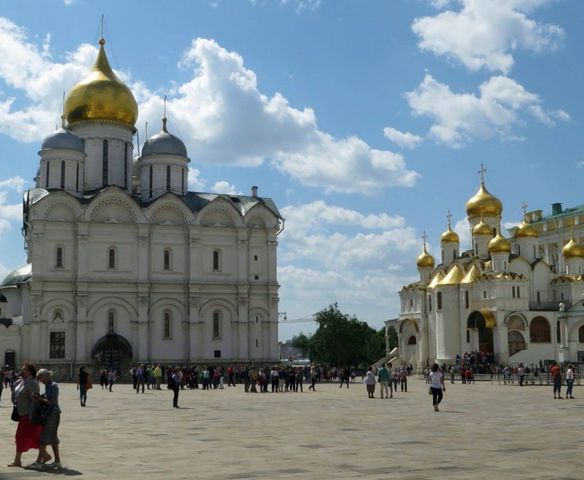
AsianOverland.net
Tour Guide - Itinerary
Asian Overland Sydney to London
Started 22/06/2022 Finished 21/06/2023365 Days ITINERARY
Day 245 date 21/02/2023MOSCOW to SMOLENSK, RUSSIA
ASIANOVERLAND.NET RUSSIA SCANDINAVIA
DAY 21/245 1981 – MOSCOW TO SMOLENSK, RUSSIA
The drive from Moscow to Smolensk takes us through Borodino, for a visit to the site of the Battle of Borodino, which took place on 7 September 1812 during Napoleon's French invasion of Russia.
The Grande Armée won the battle against the Russian Army with casualties in a ratio 2:3, but failed to gain a decisive victory. Napoleon fought against General Mikhail Kutuzov, who the Emperor Alexander I of Russia had appointed on 29 August 1812 after the Russian loss at the Battle of Smolensk. After the Battle of Borodino, Napoleon remained on the battlefield with his army while the Russian forces retreated.
The Battle of Borodino has been described as a Pyrrhic victory for the French, which would ultimately cost Napoleon the war and his crown, although at the time none of this was apparent to either side.
Smolensk is the administrative center of Smolensk Oblast, Russia, located on the Dnieper River, 360 kilometers west-southwest of Moscow.
The walled city in the center of Smolensk was destroyed many times throughout its long history, as it was on the invasion routes of the Mongol Empire, Polish–Lithuanian Commonwealth, Tsardom of Russia, First French Empire and Nazi Germany.
Smolensk is one of the saddest cities I ever visited. The city was full of crying, sad, women dressed in black, who were still mourning the deaths of their fathers, husbands and sons during the Nazi German invasion. There must have been some men in Smolensk, but I didn’t see any.
Smolensk is among the oldest Russian cities. The first recorded mention of the city was 863 AD, two years after the founding of Kievan Rus'. The town was mentioned when Viking Varangian chieftains, on their way to Kiev, decided against challenging Smolensk on account of its large size and population.
Smolensk was located in the area settled by the East Slavic Radimichs tribe in 882 when Oleg of Novgorod took it when travelling to Kiev.
The first foreign writer to mention the city was the Byzantine Emperor Constantine (c. 950), who described Smolensk as a key station on the trade route from the Viking Varangians to the Greeks.
The Rus' people sailed from the Baltic region up the Western Dvina River as far as they could, then they carried or dragged their boats to the upper Dnieper. It was in Smolensk that they mended any leaks and holes in their boats from being dragged on the ground, using tar to repair the holes.
The Principality of Smolensk was founded in 1054. Due to its central position in Kievan Rus', the city developed rapidly. By the end of the 12th century, the princedom was one of the strongest in Eastern Europe, and Smolensk princes frequently controlled the Kievan throne.
Numerous churches were built in the city, including the church of Saints Peter and Paul (1146, reconstructed to its original appearance after World War II) and the church of St. John the Baptist (1180, also partly rebuilt after WW II). The most remarkable church in the city is called Svirskaya (1197, still standing); admired as the most beautiful structure east of Kiev.
Smolensk has been a special place for Russians, partly because the local cathedral housed one of the most venerated Orthodox icons, attributed to St. Luke. Building the new Cathedral of the Assumption was a great project which took more than a century to complete. Despite slowly sinking into an economic backwater, Smolensk was still valued by the Tsars as a key fortress defending the route to Moscow.
In August 1812, two of the largest armies ever assembled clashed in Smolensk. During the hard-fought battle, described by Leo Tolstoy in War and Peace, Napoleon entered the city. Total losses were estimated at 30,000 men.
During World War II, Smolensk was once again the tragic scene of wide-scale fighting during the first Battle of Smolensk when the city was captured by the Germans on July 16, 1941. The first Soviet counteroffensive against the German army was launched in August 1941, but failed. However, limited Soviet victories outside the city halted the German advance for a crucial two months, granting time for Moscow's defenders to prepare in earnest.
The Nuremberg Trials included the Katyn massacre, when over 93% of the city was destroyed during the fighting, and the ancient icon of Our Lady of Smolensk was lost.
In late 1943, Göring ordered the destruction of Smolensk in accordance with the Nazi "scorched earth" policy.
The city was finally liberated on September 25, 1943, during the second Battle of Smolensk. The rare title of Hero City was bestowed on Smolensk after the war.
© This work is copyright. Apart from any use permitted under the Copyright Act 1968, no part may be reproduced by any process, nor may any other exclusive right be exercised, without the permission of Peter Searle, peter@portseavillageresort.com; 1980-2024.
Website built by Justin O’Dea www.webdeveloperdocklands.com.au





